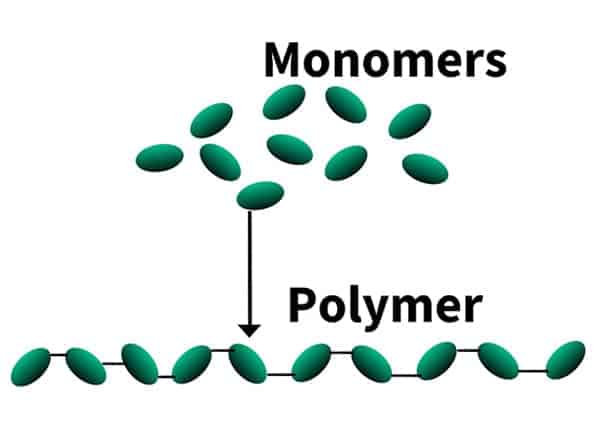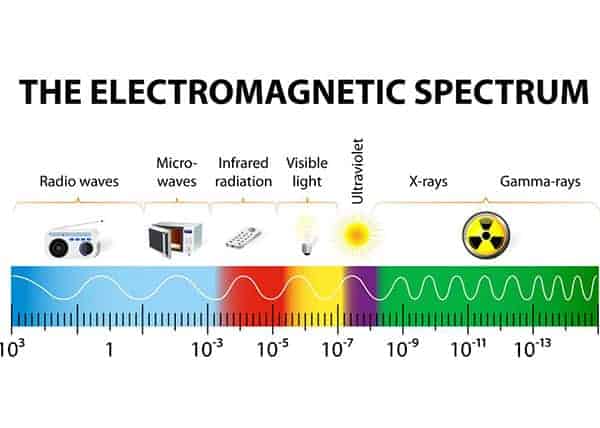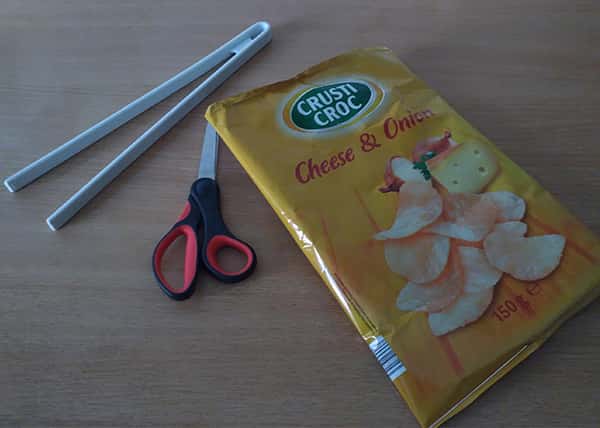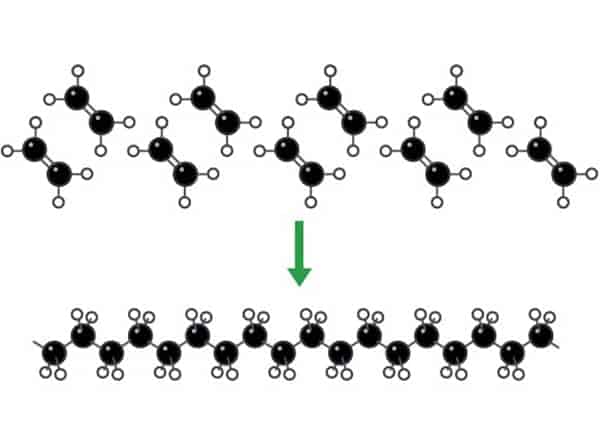Today we will show you magic: we will take one normal size potato chips bag and shrink it! But is it really magic? Of course not, it’s all science! Polymers and microwaves! Let’s explore what is needed to make this cool Shrinking Bag Experiment!
Article Contents
1. What are the polymers?2. What are Microwaves and how do they create heat?
3. Materials Needed For Shrinking Bag Experiment
4. Instructions for Shrinking Bag Experiment
5. The Science behind Shrinking Bag Experiment
6. What will you develop and learn by doing the Shrinking Bag Experiment?
What are the polymers?
The bag of chips is made out of polymers, long chains of molecules. Polymers are large molecules built out of the smaller repeating units which are chemically linked.
The word polymer comes from the Greek poly which means many and mer which means parts – so as the name says they are large molecules (macromolecules) composed of smaller units (monomers).

All living things build proteins (a specific type of polymer) from monomers called amino acids. Plants and animals use only 20 of the 500 different types of amino acids that have been discovered to construct proteins.
Polymers can be both natural, for example, DNA, and already mentioned proteins. They can also be produced synthetically, the most common example is plastic and plastic products.
In an artificial polymer, each link in the chain will be the same as its neighbors. But the links in the chain of natural polymers can vary from one neighbor to another.
Natural polymer-based materials such as cotton, wool, and silk have been used for a long time. Cellulose is a natural polymer and the main component of wood and paper. Other examples include the starch molecules that we can find in plants.
Polyethylene terephthalate (PET) is used for packaging because of its properties: it is lightweight, chemically unreactive, strong, and easy to mold in any shape.
The natural state of the polymers is to be bunched up close together. However, when manufacturing a bag of chips, to get its expected shape, polymers are stretched out.
What are Microwaves and how do they create heat?
Microwaves are one type of electromagnetic radiation, just like X-rays, ultraviolet radiation, gamma-rays, and radio waves. They are used for many purposes, like communication, in radars, and are probably best known – in cooking.
A microwave oven creates microwave radiation that, when passing through food, creates dielectric heating. Simply put, dielectric heating is when an electromagnetic field disturbs molecules that start to move. These molecules now push, pull, and collide with each other. These movements and collisions create heat. The amount of temperature created is related to the kinetic energy (energy of motion) of the atoms or molecules in a material. So setting the molecules in motion increases the temperature of the material.

It is said that Percy L. Spencer discovered microwave heating properties by accident. One day while he was standing next to a radar set, he noticed that the candy bar in his pocket started to melt. That led him to research the phenomena more and eventually to build the first microwave oven.
Materials Needed For Shrinking Bag Experiment

- Empty bag of chips. Buy any bag of chips and enjoy its content. After you have finished eating, make sure the bag is empty. Shake out all the crumbs from the bag to make her ready for the experiment.
- Microwave oven. Any working microwave oven will do the trick. Hopefully, you have one in your kitchen. Just remember to supervise children if they are not allowed to use the microwave oven alone. Or ask your caregivers for assistance if you are the child who is trying to conduct the experiment.
- Kitchen tongs. We will use the kitchen tongs to get out the shrunk bag from the microwave oven since it will be hot.
- Scissors. They are needed only if the chips bag is too big and doesn’t fit the microwave oven. Then we can use scissors to cut the bag and make her smaller.
Instructions for Shrinking Bag Experiment
Watch the video at the beginning of the article for a video guide, or continue reading for step-by-step instructions on making the shrinking bag experiment.
- Empty the bag of chips and flatten it as much as you can. If the bag is too big, cut the top part of it so it fits in the microwave oven.
- Put the bag inside the microwave oven. Set the heat to maximum temperature and heat the bag for 5 seconds. You will notice cracking noise and sparkles coming out of the bag and poof, the bag will shrink.
- Carefully, take the bag out of the microwave oven with the help of the tongs. It’s hot!
- That’s it! You have a miniature bag of chips! Talk with your child about what could be the cause of this “magical” transformation and explore the chemical properties of the polymers together.
The Science behind Shrinking Bag Experiment
To get the bag of chips we all know and love, it needs to be processed in a factory using polymers and other materials.
Polymers that are used to produce chips bags have a tendency to be disorganized and clumped together. But they can be heated and stretched to make the needed shape for the bags we all know today.
And that process of manufacturing bags makes polymers stretched out and locks them in that position. Now they retain the shape of the bag and don’t clump together anymore. This is done to make the bag lighter and easier for transportation and general use.

But if the material is heated, as we are doing when putting it in the microwave, it releases polymers from their stretched state. Now they are again trying to return to their normal state, close together, so the bag is shrinking.
But how come we get the miniature bag and not just a ball of polymers? The bag maintains its shape because polymers are still bound to each other and surrounded by layers of other materials such as aluminum and paint. These materials don’t change shape so they make sure we get a miniature bag.
What will you develop and learn by doing the Shrinking Bag Experiment?
- What are the polymers, what are their properties, and what are they used for
- What are microwaves and how do they function
- Effects of heat on the molecular composition
- The scientific method, observation, and conducting experiments
We hope you enjoyed this “magical” science experiment as much as we did. And if you’re still searching for fun experiments, we have some great recommendations for you:
- After shrinking the chips bag, you can try and crush the soda can using just water in the how to demonstrate air pressure with can crush experiment.
- And if you’re interested in which materials conduct heat the best, check out this great heat conduction experiment.
- And for more shrinking and expanding, you can check out the gummy bear osmosis experiment and learn about osmosis.
- For more polymer activity examples, check out 5 amazing balloon experiments and learn even more about polymers!
- And last but not least, we recommend this amazing kitchen activity of creating your own plastic from milk and vinegar. A ton of fun is guaranteed even after the activity is done.
And until next time, happy shrinking!
If you’re searching for some great STEM Activities for Kids and Child development tips, you’re in the right place! Check the Categories below to find the right activity for you.

STEM Science
Videos, guides and explanations about STEM Science in a step-by-step way with materials you probably already have at your home. Find new Science ideas.
Read more
STEM Technology
Videos, guides and explanations about STEM Technology in a step-by-step way with materials you probably already have at your home. Find new Technology ideas.
Read more
STEM Engineering
Videos, guides and explanations about STEM Engineering in a step-by-step way with materials you probably already have at your home. New Engineering ideas!
Read more
STEM Math
Videos, guides and explanations about STEM Math in a step-by-step way with materials you probably already have at your home. Find new Mathematics ideas.
Read more
Psychology
Find out all about development psychology topics that you always wanted to know. Here are articles from child psychology and development psychology overall.
Read more
First year of Child’s Life
Following a Child’s development every month from its birth. Personal experiences and tips on how to cope with challenges that you will face in parenting.
Read more
4 thoughts on “How to Shrink a Bag with Microwaves?”